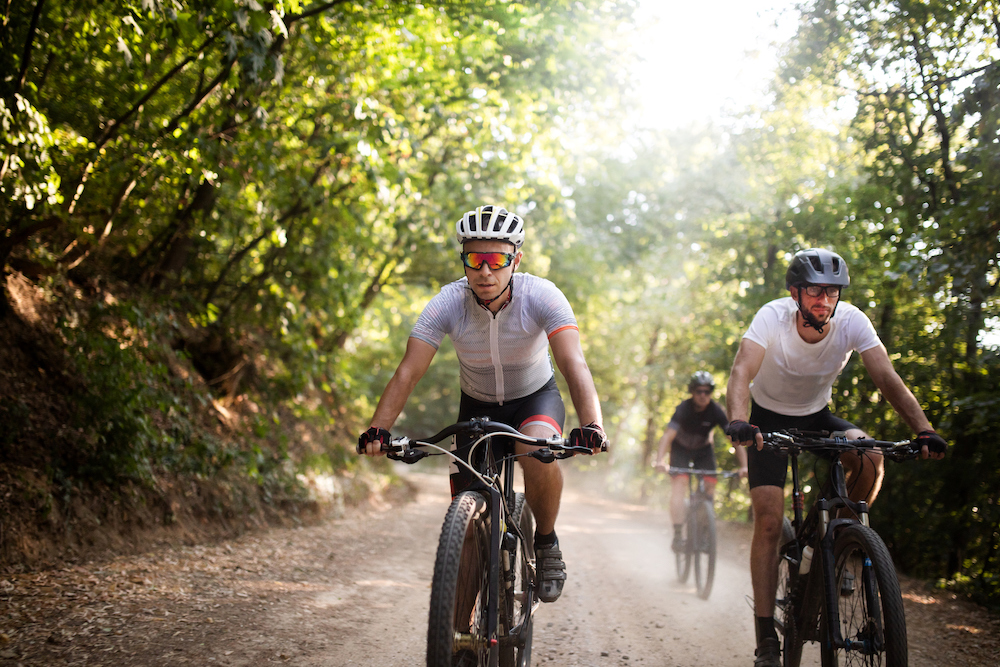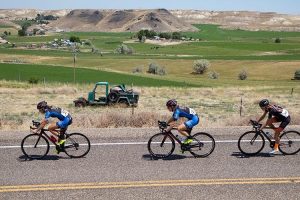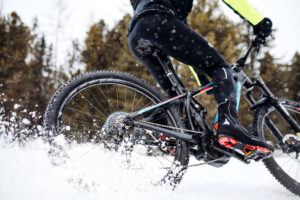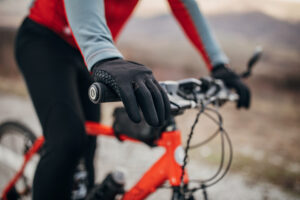Cycling is more than just hopping on a bike and starting your ride. Whether you’re a beginner, leisure rider, or a seasoned cyclist, having the right gear makes a big difference in your enjoyment. It is so important o have the right gear! Here are some of our thoughts on the essentials you may need:
Helmet
A helmet is the most important piece of cycling gear, regardless of whether you’re riding in the city, on trails, or on long road trips. It’s your first line of defense in the event of a fall or collision. When choosing a helmet, ensure it fits snugly and meets safety standards, such as CPSC or MIPS certification for added protection. Look for helmets with good ventilation to keep you cool, especially on longer rides.
Cycling Clothes
Wearing the right cycling apparel is crucial for comfort, especially on longer rides. Proper cycling clothes are designed to reduce wind resistance, manage moisture, and improve your overall comfort.
- Jersey. A good cycling jersey is lightweight, breathable, and wicks sweat away from your skin. They often feature back pockets for storing essentials like snacks or tools.
- Cycling Shorts. Padded cycling shorts or bibs are a must for longer rides. The padding, or chamois, reduces friction and pressure on your body, preventing saddle sores. Bib shorts, which have straps over the shoulders, offer more comfort as they eliminate the waistband.
- Gloves. Cycling gloves are more than just an accessory. They provide grip, reduce hand fatigue, and offer some protection in case of a fall. For road cycling, half-finger gloves are popular, while mountain bikers may prefer full-finger gloves for better control.
Footwear
If you’re serious about cycling, investing in clipless pedals and cycling shoes is a game-changer. These allow you to clip into your pedals, giving you more control and power during your ride.
Cycling shoes come with stiff soles, which improve pedaling efficiency by distributing power more evenly throughout your stroke. Depending on your riding style, you can choose from road-specific shoes (sleek, lightweight) or mountain biking shoes (more rugged and walkable).
Visibility Aids
Visibility is key, especially when riding in low-light conditions or at night. Equip your bike with front and rear lights—white for the front and red for the back. High-lumen lights are best for dark environments, while blinkers work well in urban settings to make you visible to cars. Reflective clothing, stickers, or accessories further enhance your visibility, keeping you safe in traffic.
Tire Repair
Being prepared is essential because anything can happen when you’r eon the road. Carry a portable bike pump or CO2 inflator to reinflate a tire quickly. A small repair kit should include:
- Tire levers
- Spare tube or patch kit
- Multi-tool (with Allen wrenches, screwdrivers, and chain tools)
These tools are compact and fit easily in a saddlebag or jersey pocket.
Hydration
Staying hydrated during your ride is crucial, especially on hot days or long rides. A durable water bottle and a cage mounted to your bike frame make it easy to stay hydrated without stopping. Some cyclists opt for hydration packs, especially for mountain biking or endurance rides.
Saddle Bag
A small saddlebag attached to your bike seat is ideal for carrying essentials like your repair kit, spare tube, and personal items such as your phone or wallet. It’s convenient and keeps your pockets light.
No matter what style of rider you are, whether you ride your bike to commute to work, take leisure rides on weekends, or are an athlete preparing for a race, you need the right gear. It’s worth it to take the time to equip yourself properly!
Share this post:



